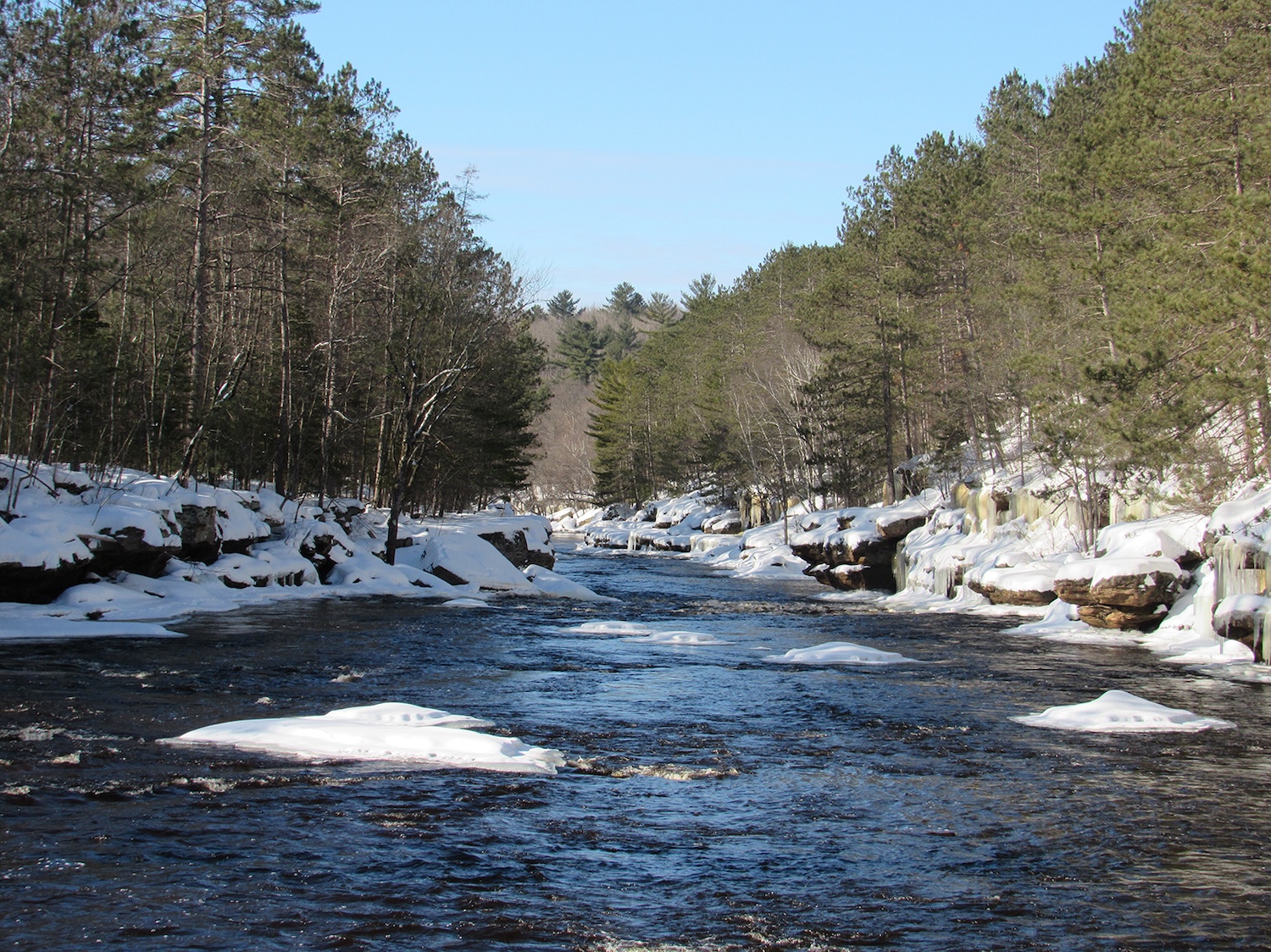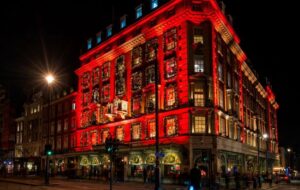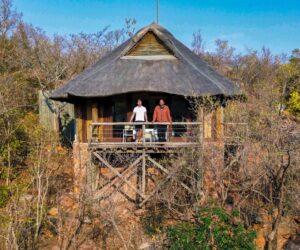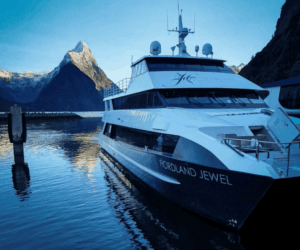Minnesota’s Best Winter Hikes
Andrew.Parks
Thu, 11/07/2024 – 14:12
Between seeing fresh snowflakes on sunny afternoons and glimmering ice, winter in Minnesota can be magical. It can also be intimidating if you don’t know what trails to hit. Learn about Minnesota’s best winter hikes below, along with some helpful tips for how to make the most of everything from lake overlooks to frozen waterfalls.
What To Read Next
Minnesota’s State Parks: 5 Must-See Attractions
Read More
26 Things You Should Know About Minnesota, From A to Z
Read More
4 Unforgettable Bike Rides in Southern Minnesota
Read More
Get help from the experts to plan your trip
Want to know the best spots in Minnesota? How about tips on how to make the most of your time in a specific city? Our Minnesota experts can answer your questions, offer advice, or plan the perfect Minnesota trip for you. For free.
Outdoor Adventures
Hiking
Article
Aaron Shaffer
CENTRAL MINNESOTA

Banning State Park
/ Credit: Tinna Wanner / Parks & Trails Council of Minnesota
BANNING STATE PARK | SANDSTONE
About 90 minutes north of Minneapolis-St. Paul lies a state park with quarry ruins, scenic cliffs, river views, and abundant trails. Take the nearly two-mile Quarry Loop Trail and see rapids and waterfalls, as well as old quarry buildings. Make sure to bring your own snowshoes, as there are no rentals in the park.
Difficulty: With some distance from any major metropolitan area, you’ll be somewhat remote, and conditions can be variable, 3/5
MINNEAPOLIS-ST. PAUL

Canadian geese at the Minnesota Valley National Wildlife Refuge
/ Credit: Ted Narveson / U.S. Fish and Wildlife Service
MINNESOTA VALLEY NATIONAL WILDLIFE REFUGE | BLOOMINGTON
Right in the heart of the Twin Cities is the Minnesota Valley National Wildlife Refuge, where you can hike on snowy trails and see wildlife like exotic birds and deer while forgetting you’re not far from the Mall of America. It feels that remote. The Wildlife Refuge also offers free snowshoe rentals and plenty of accessible options for hikers of differing abilities.
Difficulty: With easy access and some ups and downs, 2/5

A couple snowshoes at Afton State Park
/ Credit: Minnesota DNR
AFTON STATE PARK | HASTINGS
Head east of St. Paul and Woodbury and you’ll soon find Afton State Park. It’s not just a ski area; there’s a whole network of hiking trails along the St. Croix River and nearby prairie and forest paths. Soak in the views without needing to road trip too far to get there.
Difficulty: Easy access from the Twin Cities, with lots of ups and downs, 2/5

Minnehaha Falls
/ Credit: Will Wright
MINNEHAHA REGIONAL PARK | MINNEAPOLIS
Minnehaha Regional Park is the place to go for winter hikes in Minneapolis. You’ll see the iconic Minnehaha Falls, and with the right traction aids (likely hiking poles and Yaktrax), you can descend the steps to look up at the falls, which are often mostly ice in the winter. After gazing at the falls, you can walk along Minnehaha Creek as it approaches the Mississippi.
Difficulty: Easy access, but high probability of ice on steps, 2/5
NORTHEAST MINNESOTA

Snowshoeing along the Cascade River on Minnesota’s North Shore
This region near Lake Superior has abundant outdoor recreation opportunities, including the 300-mile-long Superior Hiking Trail. In the winter, you’ll have less foliage to block views of the lake, but you’ll want to consider a shorter hike due to less daylight hours and colder weather.

Snowmobilers in Temperance River State Park
TEMPERANCE RIVER STATE PARK | TOFTE
You’ll see waterfalls from the moment you get into this state park. With ice mixed in alongside moving water in the Temperance River Gorge, it’ll immediately make the trek worth it. You’ll have several options— either the Superior Hiking Trail, which traverses both sides of the river, or one of the other nearby loops. These trails are typically compacted unless it just snowed, but make sure you plan for the conditions.
Difficulty: Easy access with variable terrain and the likelihood of ice, 3/5.

Split Rock Lighthouse State Park
/ Credit: Francie Duea
SPLIT ROCK LIGHTHOUSE STATE PARK | TWO HARBORS
Whether it’s a cloudy or sunny day in winter, seeing something majestic and powerful like the Split Rock Lighthouse can give your hike a sense of purpose. Park at the visitor center, rent some snowshoes (or use your own), and find the closest trail open for the winter — either immediately to the left or right of the lighthouse. These trails will combine to create an hour or so of hiking, including views of the lighthouse, and can link up to additional paths if you’re looking for a longer outing.
Difficulty: Due to ease of access and short distance, 2/5

Enger Tower
/ Credit: Visit Duluth
ENGER TOWER | DULUTH
Heading to Duluth for the weekend in the winter? Enger Tower has a parking lot right at its base, so the actual hike up is quite quick. Combine that with a section of the Superior Hiking Trail to add anywhere from a few minutes to a few hours of outdoor time — without any additional road tripping to get there!
Difficulty: With easy access from Duluth, the short version is 1/5
NORTHWEST MINNESOTA

Hegman Lake
/ Credit: Friends of the Boundary Waters
HEGMAN LAKE | ELY
Located in the Boundary Waters Canoe Area Wilderness, this lake freezes over every winter and gives hikers access to amazing pictographs you can typically only see in the summer by canoe. Enter via BWCA Entry Point 77 off the Echo Trail after making sure the lake is rock solid, and the road is open.
Difficulty: This 5-mile round-trip route is flat, but the remoteness of the Boundary Waters makes it a resounding 4/5. Plan for several hours of walking and let a friend or family member know where you’ll be beforehand.

Itasca State Park near the Mississippi Headwaters during the winter
ITASCA STATE PARK | PARK RAPIDS
Rent some snowshoes (they’re $6 per day at a number of state park offices) to see the start of the mighty Mississippi in winter. You can snowshoe anywhere in the park that’s not a groomed ski trail or a snowmobile trail, but some popular routes include the Dr. Roberts, Brower and Schoolcraft Trails.
Difficulty: A high ease of access, 1/5
SOUTHERN MINNESOTA

Frontenac State Park
FRONTENAC STATE PARK |FRONTENAC
Head just a little further south and east on Highway 61 from Red Wing, and you’ll arrive at Frontenac State Park. Look for the 2.6-mile Hiking Club Trail; it will bring you to several overlooks with gorgeous views of Lake Pepin. The trail loop contains many ups and downs, which can get a little icy during winter in southeastern Minnesota.
Difficulty: Longer distance from a major metropolitan area, and some possibly slick ups and downs, 3/5

Winnewissa Falls at Pipestone National Monument
/ Credit: National Park Service
PIPESTONE NATIONAL MONUMENT | PIPESTONE
Learn about this historic Native American site, which has been used for more than 3,000 years to quarry soft stone and make pipes. At just over a mile round trip, the hike itself is relatively short, but an indoor exhibit and film area combined with the cultural elements of the hike make the trip worthwhile. Plan to hike a mix of paved and unpaved trails.
Difficulty: Easy access and limited distance, 1/5
WHAT KIND OF CLOTHING DO I NEED TO HIKE IN MINNESOTA DURING THE WINTER?

Snowshoeing at Boyd Lodge
/ Buffalo Media Group
Hiking boots or trail running shoes are typically sufficient for a short hike in Minnesota, but it’s important to keep varying winter conditions in mind. Some hikes contain bare pavement, thick snow, and ice all in one hike.
Plan not just based on what you think weather conditions or trail conditions might be, but also for remoteness. If you’re in the wilderness, or even a remote section of a state park, you want to be 100% sure your gear will work.
Well-traveled hiking routes will usually have footprints within a few days of a snowstorm. Better traction can be found on slippery terrain with snowshoes, winter boots, and popular accessories like Yaktrax and hiking poles.
If it’s supposed to be sunny, plan on bringing a pair of sunglasses or ski goggles. Snowy and sunny conditions mean it’s going to be bright.

Winter sunrise in Voyageurs National Park / Abdiel Nieves
Make sure you have warm enough gear to stand still for a few minutes, but not so warm that you’ll get overheated if you’re moving around. That last thing you want is sweat when it’s cold.
Mittens are much more effective than gloves. If you’re venturing into the woods in winter, you’ll want your hands to stay warm. Many of us are used to wearing gloves for short walks around town in the winter and they’re fine for that, but for extended periods outside mittens are your best bet to keep your fingers warm
Masks or balaclavas will help keep your nose and face warm during extremely cold weather, while still allowing you to take in good breaths.
FInd out more about how to dress for winter in Minnesota.

Take your pups on a winter hiking adventure
/ Alyssa Hei
DO YOU HAVE ANY OTHER WINTER HIKING TIPS?
Your water bottle can freeze. Plan on using an insulated bottle, or even bringing warm or hot water to drink. In fact, why not bring instant coffee or tea to mix with that hot water when you stop for a break? It’ll help you warm up and get the motivation to keep going.
For lunch, consider bringing something warm like soup in a thermos. If not something warm, then make sure whatever you have doesn’t freeze while you hike by keeping it in a portable cooler or wrapped in a thick sweatshirt or extra jacket.
Find more things to do in Minnesota this winter.

Minnehaha Falls in winter
/ Lane Pelovsky, courtesy of Meet Minneapolis








